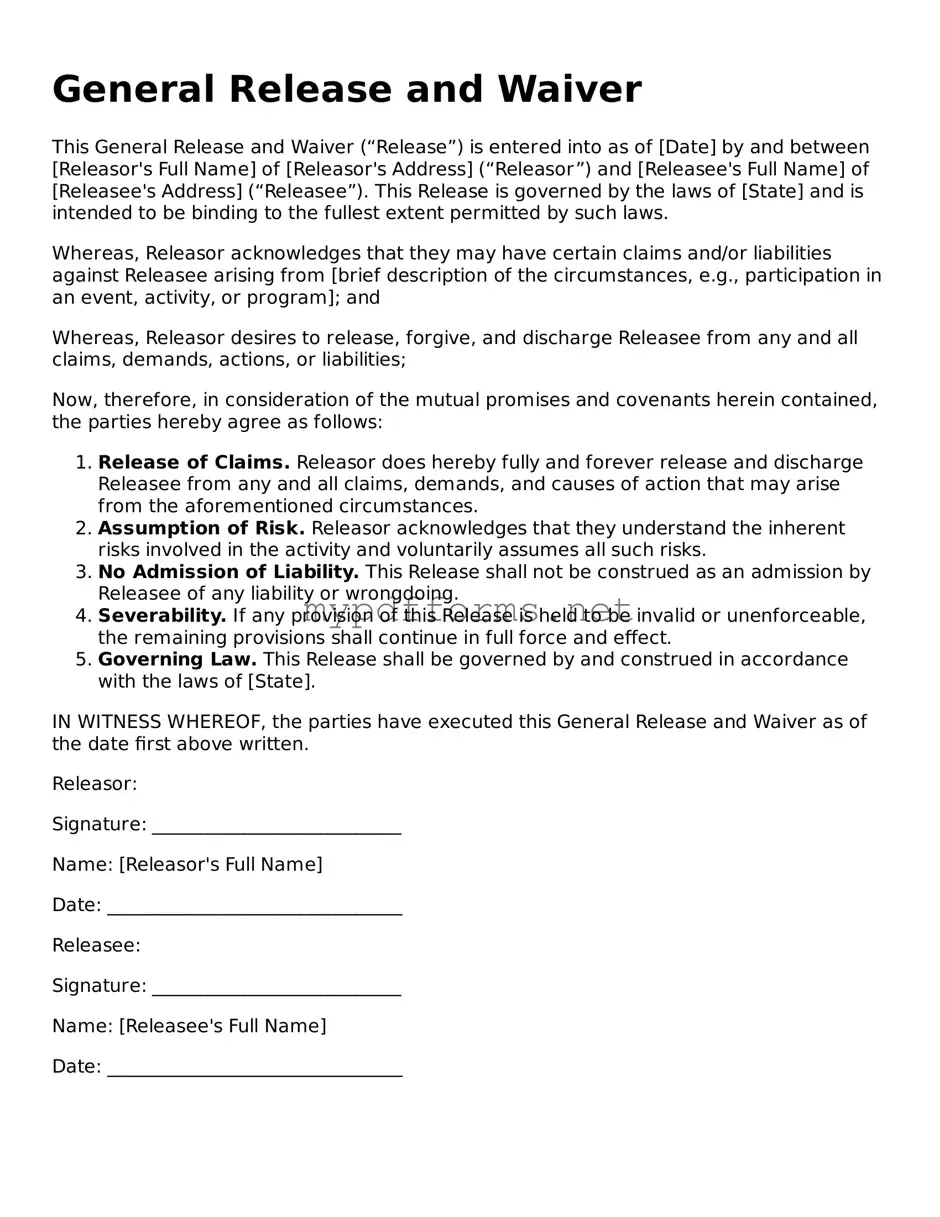The General Release and Waiver form shares similarities with a Settlement Agreement. Both documents aim to resolve disputes and prevent future claims. In a Settlement Agreement, parties agree on terms to settle a disagreement, often involving compensation. Once signed, both parties relinquish their rights to pursue further legal action related to the matter. This mutual understanding and release of claims create a sense of closure for all involved.
Understanding the significance of a comprehensive Release of Liability form is vital for any organizer involved in activities that carry risks. This form ensures that participants are aware of the potential dangers and agree to waive their right to hold the responsible party liable for any injuries or damages that may occur during the event.
Another document akin to the General Release and Waiver is the Liability Waiver. Commonly used in recreational activities, a Liability Waiver protects organizations from being held responsible for injuries or damages that may occur. Participants acknowledge the risks and agree not to hold the organization liable. Like the General Release, it emphasizes the importance of informed consent and acceptance of potential risks.
The Non-Disclosure Agreement (NDA) also bears resemblance to the General Release and Waiver. While the NDA focuses on protecting confidential information, both documents require parties to agree to terms that limit future actions. In an NDA, the disclosing party seeks assurance that sensitive information will not be shared. Similarly, the General Release ensures that past grievances will not be revisited, fostering trust between parties.
Another similar document is the Indemnity Agreement. This agreement requires one party to compensate the other for any losses or damages that may arise. Both the Indemnity Agreement and the General Release aim to protect parties from future claims. While the former focuses on financial responsibility, the latter emphasizes relinquishing rights to pursue claims altogether.
The Mutual Release form is closely related as well. In a Mutual Release, two parties agree to release each other from any claims arising from a particular situation. This document promotes cooperation and understanding, similar to the General Release and Waiver. Both forms serve to finalize matters and ensure that no further claims will be made by either party.
Another document that parallels the General Release and Waiver is the Consent Form. Typically used in medical or research settings, a Consent Form ensures that individuals are fully informed about the risks involved in a procedure or study. By signing, individuals acknowledge their understanding and agree to proceed, similar to how a General Release protects against future claims by confirming acceptance of risks.
The Release of Claims form also serves a similar purpose. This document is often used when a party wants to waive their right to make any claims against another party, particularly in personal injury cases. Like the General Release and Waiver, it provides a clear understanding that the claimant is giving up their right to pursue legal action in exchange for some form of consideration or settlement.
Another related document is the Disclaimer. A Disclaimer is often used to limit liability in various contexts, such as product use or service provision. While it may not require a signature, it serves to inform individuals of potential risks and limits the liability of the provider. Both the Disclaimer and the General Release aim to protect parties from future legal issues by clearly outlining risks and responsibilities.
Lastly, the Hold Harmless Agreement is similar in nature. This agreement is designed to protect one party from legal liability for actions taken by another party. Like the General Release and Waiver, it emphasizes the relinquishment of rights to seek compensation for any claims that may arise. Both documents create a safety net, allowing parties to engage in activities with a clearer understanding of their legal standing.
